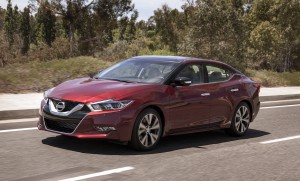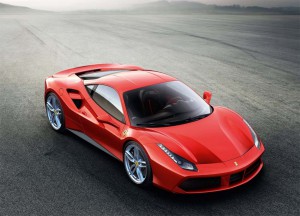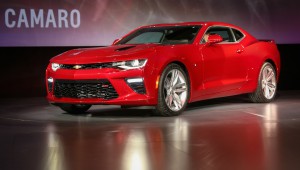When you get into the 2015 BMW M5 and hammer the throttle you’re rewarded with a satisfying, resonant exhaust note that literally screams “high performance.” Except what you’re hearing isn’t the engine.
It’s actually a digital recreation of what the engine should sound like, piped through the sporty sedan’s sound system.
A growing number of vehicles are “enhancing” or, in some instances like the BMW, fully creating engine sounds to satisfy performance drivers’ expectations. One reason is that many of today’s vehicles have grown so quiet they block out virtually all outside noise. Others have adopted new engine technologies that are lightning quick, but don’t offer the satisfying roar of a classic V-8.
When BMW introduced its Active Sound technology on the latest-generation M5 it explained that the system “delivers an accurate reproduction of the engine’s sound through the car’s audio system,” by adding a layer of artificially generated sound on top of the real engine “note.”

The 2016 Nissan Maxima is another example of a vehicle with a specially tuned exhaust note aimed at making sure drivers hear a pleasing growl when they step on the gas.
That approach has been highly controversial with BMW fans leading the maker to emphasize that 98% of what a motorist hears when driving the newer M3 and M4 models is real, not digitally simulated.
Industry studies have long shown that the sound of a hard-charging engine can be as satisfying to a driver as the actual feel of neck-snapping acceleration. So, over the last decade, carmakers have been looking for ways to satisfy the need for the sound of speed.
When it launched the original Mazda Miata a quarter century ago, the Japanese maker studied the sound of close to 100 different sports cars, tuning its own engine and exhaust system to what it felt was the ideal note.
Ferrari was an early pioneer, mechanically piping some of its sensually muscular engine sounds into the passenger compartment.
Now, manufacturers are being pushed to develop even more sophisticated systems due to several conflicting trends in the auto industry.
The completely redesigned 2016 Nissan Maxima offers one example. The maker did almost too good a job of “insulating the cabin from all outside sounds,” said product planner Vishnu Jayamohan. Since buyers of the new sports sedan “know what they want to hear,” Nissan worked with Bose to develop its own sound “enhancement” system.
(Dodge Hellcat orders bust the bank. For more, Click Here.)
Unlike the BMW M5, what a Maxima driver will hear comes entirely from the engine and exhaust – just not all of the natural sounds. That is a result of another major industry trend.

The new Ferrari 488 GTB opts for active aero and a new turbocharged V-8 engine, which will have some of its throaty roar funneled into the cabin.
Where performance and muscle cars might once have been expected to use big V-8 engines, many newer models are relying on downsized six- and even four-cylinder engines, often adding turbochargers to boost acceleration. Some, like the BMW i8, even are turning to hybrid drivetrains tuned for performance as much as fuel economy.
The problem is that such powertrain packages often produce whirs, gurgles and whines that aren’t as satisfying as a classic V-8’s roar, so manufacturers may cancel out unwanted sounds and amplifying the notes that a driver is likely to appreciate.
(Click Here for details on TDB’s first drive in the 2016 Chevy Camaro.)
In the case of the 2016 Maxima, Nissan also boosts the performance sounds by two decibels – almost double the volume – when the car is switched into Performance Mode.
Even when an engine delivers that perfect mix of guttural roar, burble and occasional backfire, manufacturers are taking steps to enhance the experience. The 2016 Chevrolet Camaro introduced last weekend has a valve that essentially bypasses the muffler under full acceleration. The Jaguar F-Type sports car takes a similar approach, releasing a roar that could only be further enhanced by adding flames from its tailpipe.
(To see more about the introduction of the new Camaro, Click Here.)
Going forward, with the industry facing ever tougher emissions and mileage standards, the classic V-8 could become an endangered species, however. And that will likely lead more and more manufacturers to adopt high-tech sound enhancement systems to remind motorists they’re really driving a performance car.



F1 is likely to need to use synthetic exhaust noise to appease the clueless because they don’t find Turbo hybrid engine exhaust noise to cause their ears to bleed. Many fans prefer the ear-splitting shrill of a 22,000 rpm F1 NA engine.
Although I think the idea of an exhaust note coming through the sudio system is a bit out there, I believe the practice is necessary to sell those types of vehicles. Case in hand: This week I installed a 3″ performance exhaust system to a Mazda BT-50 4wd Turbo Diesel which has a common rail turbo engine equipped with a Steinbauer Permormance Module. The owner is wrapped with the new note and is now so confidant of the car that he has accepted a challenge from one of the local Mechanics who owns a Nissan Navara with a 2.5l T/D Engine to have a dragrace one morning on the way to work.
This simply demonstrates why the manufacturers feel the audio with the exhaust note is required. My only thought is that I hope they have a switch to disable the audio when required.